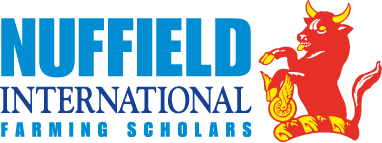Report Synopsis
Turning water into cash flow. Sustainable high yields from continuous double cropping with centre pivot irrigation
Adam McVeigh
Many regions around the world practice double cropping. China has been successfully double cropping irrigated wheat and corn for 40-50 years, showing that it can be sustainable over long periods. Brazilian farmers are currently double cropping, with excellent yields but the tropical climate and cropping frequency are putting the system under constant threat from pests and disease. This highlights the need to manage the available genetic and chemical pest/disease control technology wisely to prevent the build-up of resistance.
This report investigates double cropping systems (two harvests in one year) which are irrigated by centre pivot, with consideration to long term sustainability. The aim is to provide information that will assist farmers with a low risk capacity to plan their cropping rotation in order to achieve sustainable high crop yields and high return per megalitre (ML) of applied water. Double cropping systems provide biannual income and typically have lower and more evenly spread input costs. The concept behind this double cropping system is to lower the financial risk associated with crop loss from natural disasters like flooding. With this in mind, the crop that presents the biggest gross margin may not necessarily be the best option for a business with a low risk capacity.
This report informs readers of some of the key considerations for designing centre pivot irrigation infrastructure, and also some practical farming techniques that aid in achieving maximum yield potential. It also outlines the importance of understanding risk capacity and the impact that this should have on crop rotation choices.
Careful planning that starts with the initial design of an irrigation development is crucial to achieve the highest yields and lowest input costs which ultimately lead to the highest financial return per hectare. Poorly designed systems will limit the cropping options and potential yields, and can also increase operating costs. Employing an experienced consultant to help identify potential design or management issues during the planning phase, will be significantly more cost effective than trying to rectify poor designs after installation.
Producing continuous high yields with double cropping can be sustainable providing the centre pivot irrigation system has been designed well. Farmers must consider their exposure to risk, iv gross margins, residue management, nutrient management, integrated pest management, equipment and its proper operation.
Similar Reports
- 2024
Is tracking carbon on farm good for business?
Pippa Jones - 2022
Cannabis in Australia: cultivating at scale and lessons from overseas markets
Max Edgley - 2022
Can carbon neutral insects be farmed profitably?
Dr Olivia L. Champion - 2022
Sustainable financing of Brazilian farming: the role that supply chains can play and carbon markets probably will not
Renata Rossetto Lopes
